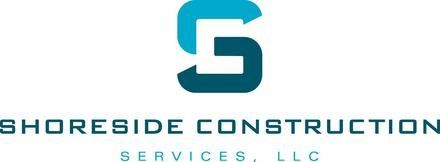October 9, 2025
This article explores the comprehensive process from the initial design to the final build when working with local construction contractors. Understanding these timelines is crucial for a successful project. A detailed examination of each phase reveals the complexities involved in construction endeavors. By dissecting each stage, we uncover strategies to optimally manage time and resources. Awareness and preparation are essential to overcoming challenges typically faced in construction projects.
Initial Consultation and Planning
Client Needs and Objectives
In the initial consultation phase, local construction contractors seek to understand the client's vision comprehensively. This entails detailed discussions about the desired outcomes, priorities, and any specific requirements. These discussions form the backbone of all future planning and design activities. Evaluating client needs helps in developing a roadmap that aligns with their aspirations. Contractors must establish a clear communication channel to ensure all client expectations are accurately captured.
Budget and Financial Planning
Furthermore, financial planning is a cornerstone of any construction project. Clients and contractors must collaborate to establish a realistic budget that accommodates all aspects of the project. This involves cost estimations for materials, labor, permits, and potential project overheads. By outlining financial parameters early, both parties can prevent budget overruns and manage finances efficiently. This transparency often mitigates potential financial disputes down the road and ensures that the project stays within stipulated costs.
Site Evaluation and Feasibility Study
Also, site evaluation and feasibility studies provide insights into the practical aspects of executing the project at a particular location. During this phase, contractors analyze the site's physical conditions, accessibility, and any existing challenges. This includes understanding environmental or topographical constraints that might impact construction activities. The feasibility study also covers legal and regulatory considerations that could influence project timelines. These evaluations help in devising a well-informed strategy for subsequent stages.
Timeline Estimation and Scheduling
Establishing an accurate timeline is fundamental to the planning process. Contractors assess various factors such as project scope, complexity, and resource availability to craft a preliminary schedule. This schedule helps in identifying critical milestones and expected completion dates. According to Architectural Digest, custom home builders commonly allocate three to five months for design and six to eight months for construction. Contractors need to communicate these estimates effectively to manage client expectations.
Design Development
Collaboration With Architects
Additionally, collaboration with architects is paramount to transforming initial ideas into detailed designs. Architects work closely with both clients and contractors to refine concept designs and incorporate technical specifications. This partnership ensures that the aesthetic vision aligns with practical building limitations and client expectations. Regular reviews and adjustments facilitate a seamless design transition. Effective collaboration is critical in delivering a cohesive and executable design plan.
Detailed Design Specification
Continuing, a detailed design specification marks the transition from conceptualization to technical detailing. This phase involves generating in-depth architectural plans and schematics. It includes precise measurements, construction methodology, and material specifications. Detailed designs are essential for obtaining actionable contractor bids and initiating the permit process. These designs serve as the foundation for all forthcoming construction activities, minimizing uncertainties and potential deviations.
Engineering and Technical Drawings
Furthermore, engineering and technical drawings are crucial to defining structural integrity and safety. These drawings offer comprehensive insights into critical aspects like load-bearing structures, electrical systems, and plumbing layouts. Engineers collaborate with architects to integrate technical requirements with design intentions. This synthesis ensures that building codes and standards are met, avoiding future compliance issues. Technical drawings are indispensable tools, providing clarity and precision to guide construction teams.
Material Selection and Procurement Plan
In addition, material selection directly influences construction quality, cost, and project timelines. Local construction contractors work with clients to choose materials that suit both aesthetic desires and functional needs. Developing a procurement plan helps in identifying suppliers and scheduling deliveries to align with construction phases. This minimizes delays and cost overruns, ensuring resources are available when needed. Effective procurement planning is integral to maintaining project momentum.
Permits and Approvals
Zoning Laws and Regulations
Furthermore, zoning laws and regulations dictate what can be built and where. Local construction contractors must familiarize themselves with jurisdictional requirements to avoid legal setbacks. Understanding these regulations ensures that the proposed construction meets all municipal, state, and federal guidelines. This knowledge helps in preparing accurate representations for approval. Addressing zoning constraints early facilitates a smoother transition through the permitting process.
Permit Applications
Preparing permit applications is a meticulous task requiring thorough documentation. Contractors compile essential information, including detailed plans, site analyses, and compliance verifications. Applications are submitted to relevant authorities, adhering to stringent submission guidelines. Errors or omissions can lead to significant delays, making precision and attention to detail crucial. Organizing comprehensive applications enhances the likelihood of prompt approvals.
Approval Process
The approval process can be complex and time-consuming, often involving multiple agencies. Contractors must actively follow up on submissions and address any queries or additional information requests. Regular communication with authorities can expedite approvals and prevent standstills. Knowledge of potential bureaucratic hurdles aids in better anticipation and management of delays. Securing timely approvals is essential to maintaining overall project schedules.
Timeline Adjustments Based on Delays
Permit-related delays can significantly impact construction schedules. Contractors may need to revise timelines based on how quickly approvals are obtained. Proactive planning includes anticipating potential approval delays and creating contingency strategies. Contractors communicate updates to clients, ensuring transparency and setting realistic expectations. Flexibility in timeline adjustments is vital to accommodating unforeseen delays without affecting overall project goals.
Pre-Construction Activities
Subcontractors
The success of a construction project heavily relies on competent subcontractors. During pre-construction, contractors identify and hire subcontractors with the necessary expertise and reliability. Establishing a robust schedule for these subcontractors is crucial for smooth project execution. Contractors align subcontractor activities with the overall construction timeline to ensure synchronization. This coordination minimizes disruptions and optimizes workflow, critical for meeting project milestones.
Materials and Equipment
Furthermore, material and equipment procurement must align with the construction schedule to avoid delays. Local construction contractors finalize orders based on pre-approved specifications and timelines. They coordinate with suppliers to ensure timely delivery and handle logistics for storage and distribution on-site. Efficiently managing resources contributes to cost-effectiveness and minimizes downtime. Effective procurement planning mitigates risks related to shortages or unexpected price fluctuations.
Site Preparation and Setup
Additionally, site preparation lays the groundwork for subsequent construction operations. It involves clearing the site, setting up access roads, and installing temporary facilities. Contractors must ensure that the site is adequately prepared to handle construction activities safely and efficiently. Site setup also includes establishing utility connections as per design requirements. Proper site preparation is a critical precursor to commencing actual construction work.
Health and Safety Protocols
Implementing health and safety protocols is a legal and ethical mandate during construction. Contractors must develop comprehensive safety plans that ensure worker protection and minimize risks. These protocols cover aspects such as protective gear, emergency procedures, and safety training. Consistent safety checks and compliance audits ensure adherence to established guidelines. Prioritizing safety protocols fosters a secure working environment, vital for project continuity.
Understanding the full timeline of a construction project, from design to build, helps ensure smooth execution and completion. Engaging local construction contractors with both technical expertise and clear communication is key. Contact Shoreside Construction Services today to get started with our construction services.

